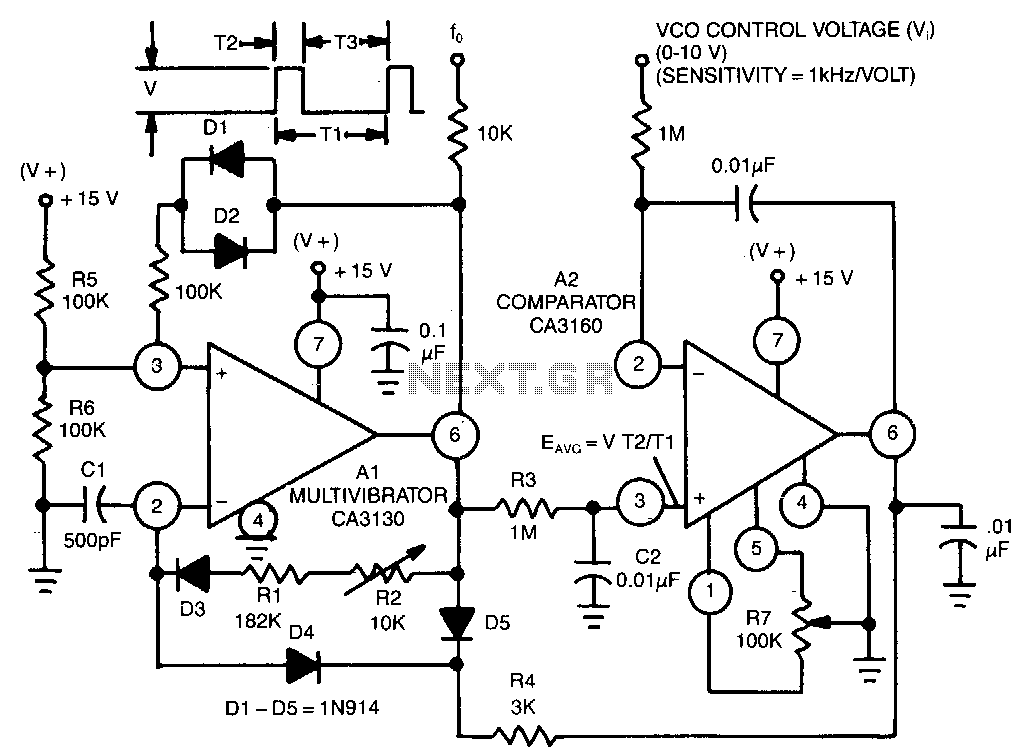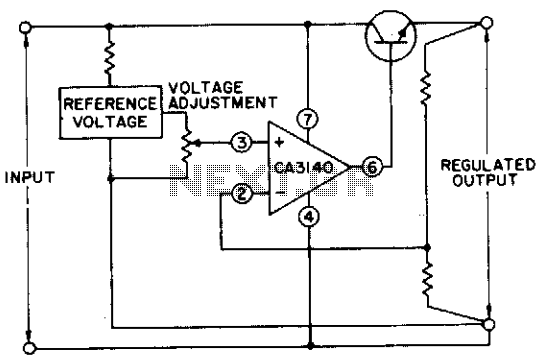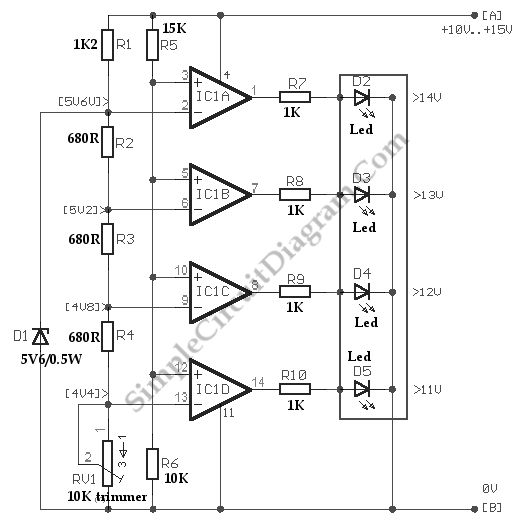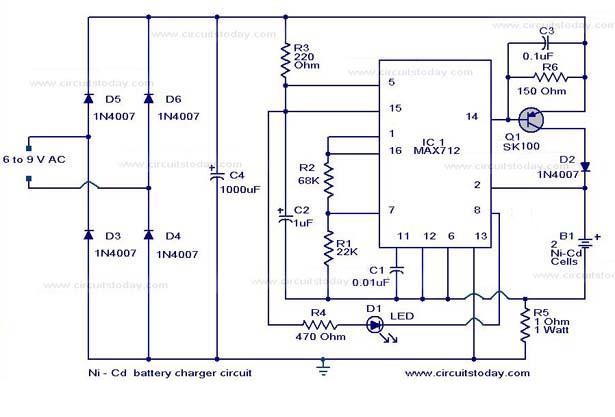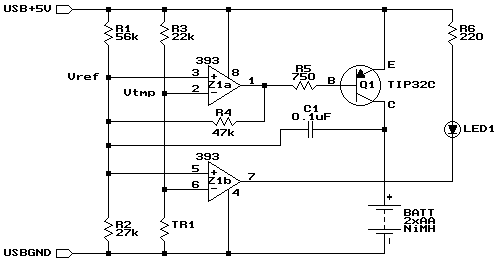
Car battery voltage monitor
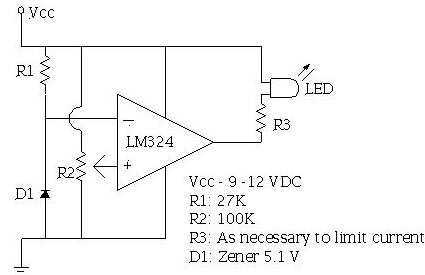
An ECU must have a way to monitor battery voltage. Here is a simple op-amp based circuit which will illuminate the LED when the battery voltage drops to a certain level. The turn-on point is set with R2. You must be able to vary Vcc (usually with a good power supply) to set the circuit. More: Decide at what voltage you'd like the LED to illuminate, and apply this at Vcc. Adjust R2 until the light just illuminates. Use an LED which will light at the desired voltage level, and determine R3, using ohm's law (E=IR), to keep the current flowing through the LED at a safe level.
The described circuit utilizes an operational amplifier (op-amp) configured as a voltage comparator to monitor the battery voltage. The op-amp has two input terminals: the non-inverting terminal (+) receives a reference voltage set by a voltage divider formed by resistors R1 and R2, while the inverting terminal (-) is connected to the battery voltage being monitored.
To establish the desired turn-on voltage for the LED, the voltage divider formed by R1 and R2 can be adjusted. The output of the op-amp will change state when the battery voltage falls below the reference voltage set at the non-inverting terminal. When this occurs, the output of the op-amp goes high, providing enough current to drive the LED, which will illuminate, signaling that the battery voltage is low.
The value of R2 is critical as it determines the voltage at which the LED will turn on. By adjusting R2, the user can set the threshold voltage to any desired level, allowing for flexibility depending on the application requirements.
R3 is used to limit the current flowing through the LED to prevent damage. This resistor can be calculated using Ohm's Law (E = IR), where E is the voltage drop across the LED, I is the desired current through the LED (typically specified in the LED's datasheet), and R3 can be derived as R3 = (Vcc - V_LED) / I_LED.
In summary, the circuit provides a simple yet effective means of monitoring battery voltage using an op-amp and an LED indicator, with adjustable parameters to suit various battery voltage levels and LED specifications.An ECU must have a way to monitor battery voltage. Here is a simple op-amp based circuit which will illuminate the LED when the battery voltage drops to a certain level. The turn-on point is set with R2. You must be able to vary Vcc (usually with a good power supply) to set the circuit. Decide at what voltage you`d like the LED to illuminate, and apply this at Vcc. Adjust R2 until the light just illuminates. Use an LED which will light at the desired voltage level, and determine R3, using ohm`s law (E=IR), to keep the current f 🔗 External reference
The described circuit utilizes an operational amplifier (op-amp) configured as a voltage comparator to monitor the battery voltage. The op-amp has two input terminals: the non-inverting terminal (+) receives a reference voltage set by a voltage divider formed by resistors R1 and R2, while the inverting terminal (-) is connected to the battery voltage being monitored.
To establish the desired turn-on voltage for the LED, the voltage divider formed by R1 and R2 can be adjusted. The output of the op-amp will change state when the battery voltage falls below the reference voltage set at the non-inverting terminal. When this occurs, the output of the op-amp goes high, providing enough current to drive the LED, which will illuminate, signaling that the battery voltage is low.
The value of R2 is critical as it determines the voltage at which the LED will turn on. By adjusting R2, the user can set the threshold voltage to any desired level, allowing for flexibility depending on the application requirements.
R3 is used to limit the current flowing through the LED to prevent damage. This resistor can be calculated using Ohm's Law (E = IR), where E is the voltage drop across the LED, I is the desired current through the LED (typically specified in the LED's datasheet), and R3 can be derived as R3 = (Vcc - V_LED) / I_LED.
In summary, the circuit provides a simple yet effective means of monitoring battery voltage using an op-amp and an LED indicator, with adjustable parameters to suit various battery voltage levels and LED specifications.An ECU must have a way to monitor battery voltage. Here is a simple op-amp based circuit which will illuminate the LED when the battery voltage drops to a certain level. The turn-on point is set with R2. You must be able to vary Vcc (usually with a good power supply) to set the circuit. Decide at what voltage you`d like the LED to illuminate, and apply this at Vcc. Adjust R2 until the light just illuminates. Use an LED which will light at the desired voltage level, and determine R3, using ohm`s law (E=IR), to keep the current f 🔗 External reference
Warning: include(partials/cookie-banner.php): Failed to open stream: Permission denied in /var/www/html/nextgr/view-circuit.php on line 713
Warning: include(): Failed opening 'partials/cookie-banner.php' for inclusion (include_path='.:/usr/share/php') in /var/www/html/nextgr/view-circuit.php on line 713
